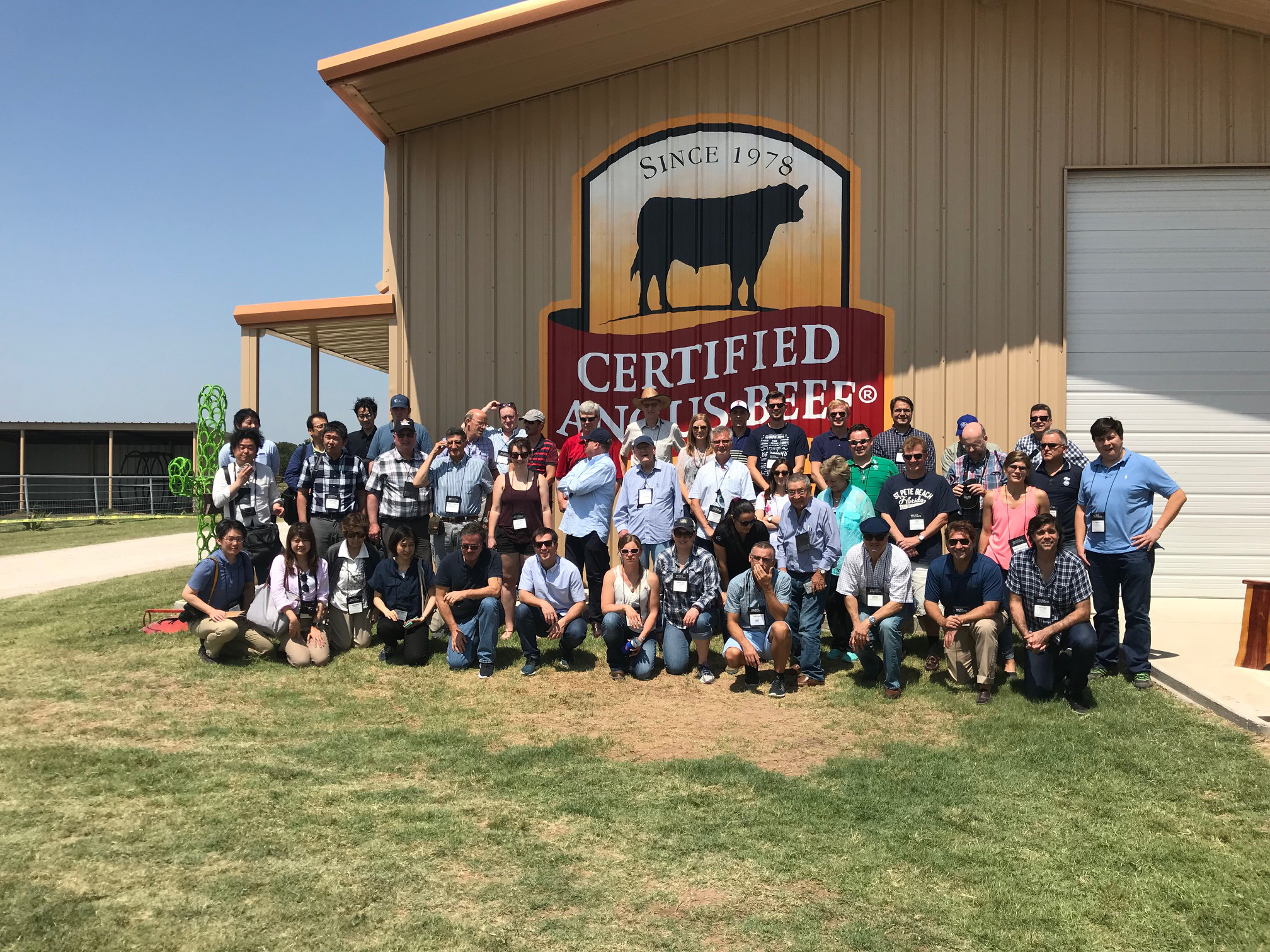Farm & Ranch
Meanwhile back at the ranch…

By Rayford Pullen
Summer has arrived, and with it comes a rapid decline in forage quality, milk production, breed back and overall lower gains for both calves and mature animals.
Getting females to breed this time of year is also a challenge, especially for first calvers, and the only way to help this process is to supplement protein that is now lacking in our grass and hope it’s not too hot for the semen quality to decline below what is needed for conception.
I realize many parts of the state are enduring droughts of varying degrees at this time, but in North Texas we have been beyond fortunate in receiving enough moisture to keep our pastures going. Seventy-five percent of our forage growth occurs by July 15 on the average each year, so if you are behind now, you may need to start making plans regarding stocking rates, cow numbers, hay, etc.
We were honored to host a tour group in June from the World Meat Congress, which is headquartered in Paris, France, and had its annual meeting in Dallas. This group had attendees from continents all over the world including Europe, South America, Central America, Asia, Australia, etc.
When asked about how we raise cattle, I was able to tell them how we have replaced antibiotics in our rations, how we vaccinate to minimize injection lesions, how we do use antibiotics if animals become sick, low stress handling, etc. In my opinion, when folks see how passionate we are about producing a wholesome product, and that, yes, we care what our customers both foreign and domestic want and try to respond accordingly, they can take this information back with them and respond accurately when negative issues arise regarding our product, which is beef.
To read more pick up a copy of the July 2018 NTFR issue. To subscribe call 940-872-5922.
Farm & Ranch
Hazards of Backyard Poultry

By Barry Whitworth, DVM
Having backyard poultry is a popular agriculture enterprise. According to the United States Department of Agriculture, 0.8 percent of all households in the United States have chickens. People keep chickens for a variety of reasons with table eggs being one of the more common reasons.
Unfortunately, some of these poultry producers are not aware of the hazards that come with keeping poultry because many times they carry pathogens but appear healthy.
Chickens are carriers of several zoonotic diseases. These are diseases that can be passed from animals to humans. According to a recent survey in Pennsylvania, a majority of backyard poultry producers were aware of the dangers of avian influenza. However, this study also revealed that far fewer producers were aware of the risk of possible exposure to Salmonella and Campylobacter.
The lack of knowledge about the hazards of raising poultry likely contributes to the continued issues of Salmonella outbreaks associated with backyard poultry. In 2023, the Centers for Disease Control and Prevention reported 1,072 illnesses of Salmonella linked to backyard poultry, and 272 of those patients required hospitalization. Oklahoma reported 43 individuals with the disease.
To read more, pick up a copy of the April issue of NTFR magazine. To subscribe by mail, call 940-872-5922.
Farm & Ranch
Ag Elsewhere: Wyoming

By Tressa Lawrence
Babies are tucked away in every nook and cranny. Many ranchers across Wyoming have baby animals popping up all over this time of year.
Farm & Ranch
Ag Elsewhere: Montana

By Lindsey Monk
Another load of grain in to keep feeding the calves until the green grass can really start popping.
-

 Country Lifestyles1 year ago
Country Lifestyles1 year agoScott & Stacey Schumacher: A Growth Mindset
-

 Equine7 months ago
Equine7 months agoThe Will to Win
-

 Country Lifestyles7 years ago
Country Lifestyles7 years agoStyle Your Profile – What your style cowboy hat says about you and new trends in 2017
-

 Country Lifestyles4 years ago
Country Lifestyles4 years agoAmber Crawford, Breakaway Roper
-

 HOME7 years ago
HOME7 years agoGrazing North Texas – Wilman Lovegrass
-

 Country Lifestyles7 years ago
Country Lifestyles7 years agoDecember 2016 Profile, Rusty Riddle – The Riddle Way
-

 Country Lifestyles8 years ago
Country Lifestyles8 years agoJune 2016 Profile – The man behind the mic: Bob Tallman
-

 Outdoor9 years ago
Outdoor9 years agoButtercup or Primrose?






